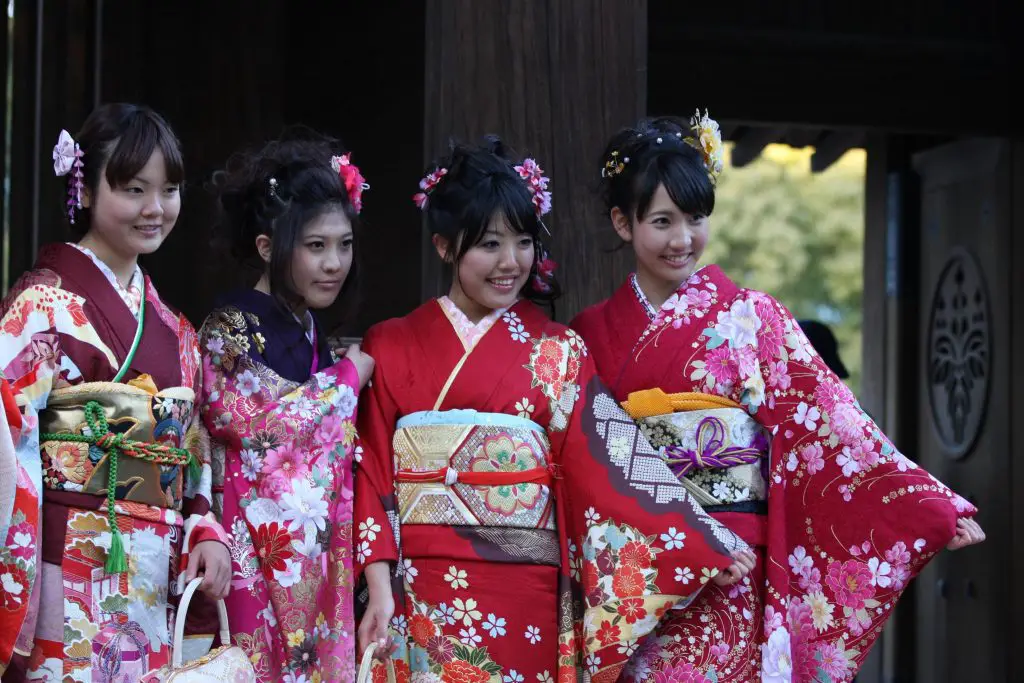1. Introduction
When traveling to Japan, it is important to understand the cultural norms and expectations of dress code. Although there are no strict rules on what to wear in Japan, there are some items of clothing that are considered inappropriate and should be avoided. This article will discuss what should not be worn in Japan, as well as provide guidelines for appropriate attire.
2. Japan’s Dress Code Culture
In Japan, dress codes are taken very seriously and people take pride in their appearance. It is expected that visitors to the country also adhere to the same standards of dress etiquette. Generally speaking, Japanese people tend to dress conservatively and prefer muted colors such as black, grey, navy blue and brown over bright colors like red or yellow. It is also important to note that showing too much skin is considered inappropriate in most public settings.

3. Types of Clothing to Avoid in Japan
When visiting Japan, it is important to avoid wearing certain types of clothing which may be deemed offensive or inappropriate by locals. These include:
• Clothing with offensive slogans or images
• T-shirts with profanity or suggestive language
• Revealing clothing such as tank tops or shorts
• Clothing with religious symbols (crosses, etc.)
• Beachwear such as swimsuits and flip-flops
• Clothing that exposes tattoos (in many public baths)
4. Specific Guidelines for Women’s Clothing
Women should avoid wearing short skirts or shorts which expose too much skin when visiting Japan, as this may be seen as disrespectful or provocative by locals. It is also important to avoid wearing revealing tops such as tank tops or crop tops which expose too much cleavage or midriff area. Instead, women should opt for more modest clothing such as long-sleeved shirts and trousers which cover the arms and legs fully.
5. Specific Guidelines for Men’s Clothing
Men should also avoid wearing shorts which expose too much skin when visiting Japan, as this may be seen as disrespectful or provocative by locals. Similarly, men should opt for more modest clothing such as long-sleeved shirts and trousers which cover the arms and legs fully instead of revealing tops such as tank tops or crop tops which expose too much chest area. Additionally, men should avoid wearing sandals outside of beach areas unless they are paired with socks for a more formal look.
6. What to Wear Instead?
Instead of the items listed above that should be avoided when visiting Japan, visitors can wear clothes that are more respectful towards local customs and culture while still being fashionable at the same time! For women this could include a nice pair of trousers paired with a blouse or shirt; while men could opt for a collared shirt paired with chinos or jeans for a more formal look if desired! Additionally, both genders can accessorize their outfits with scarves, hats and jewelry for an even more stylish look!
7. When to Dress Up or Down in Japan
It is important to note that different occasions may require different levels of dress code in Japan; therefore it is important to understand when it is appropriate to dress up or down depending on where you are going! For example; if you are attending a formal event then it would be expected that you would dress up accordingly; however if you were just going out shopping then it would be acceptable (and even encouraged!) To wear something more casual but still respectful towards local customs!
8. Conclusion
In conclusion; although there are no strict rules on what not to wear in Japan; it is important for visitors to respect local customs by avoiding certain types of clothing such as beachwear & items featuring offensive slogans/images etc., while opting instead for more modest attire such as trousers & long sleeved shirts etc., depending on the occasion/location!
9 References
>
https://www.japan-guide.com/e/e2021.html https://www.japanvisitor.com/japanese-culture/dress-code-in-japan
What is not acceptable in Japan?
Pointing at people or things is considered rude in Japan. Instead of pointing at something with their fingers Japanese people gently wave at what they want to show. When talking about themselves people touch their nose with their index finger instead of pointing at themselves.
Is it OK to wear leggings in Japan?
Japanese dress code for women is unfortunately frowned upon wearing sweatpants or leggings outside of the gym and is considered a sign of laziness here in Japan. Women at work are usually expected to look normal and in the same colors as men.
Is it OK to wear red in Japan?
Red clothes bring happiness and shine. In fact red is considered the happiest color in Japan when it comes to clothes.
Is it rude to hug in Japan?
Never Hug or Kiss In Japan it is considered inappropriate to touch another persons body even with friends or family. Let us encourage the pious hugger with hugs and kisses usually between partners.
Do you have to wear a bra in Japan?
Japanese men dont wear bras or anything. They only wear Hadajyuban (肉苏肥) and Susoyok (裂よけ) to hide their skin and body shape. Many men these days dont want to follow the no-underwear rule and usually just wear bras and underwear.
Is it rude to cross your legs in Japan?
In Japan it is considered impolite to cross your legs in formal or business situations because it makes you seem opinionated or narcissistic. In Japan it is taught from childhood to sit on each knee with your back straight and your feet together.
